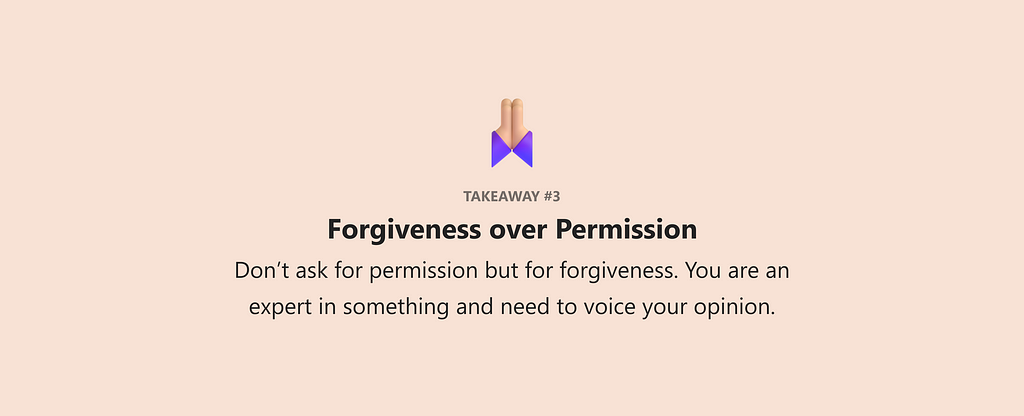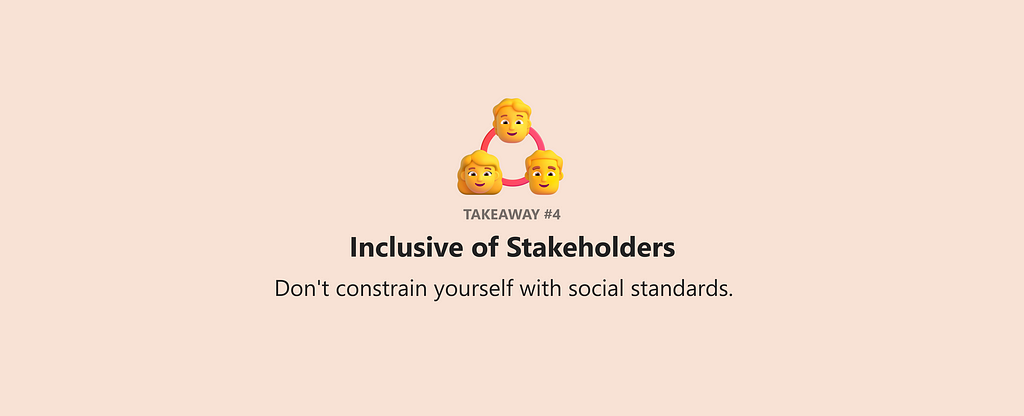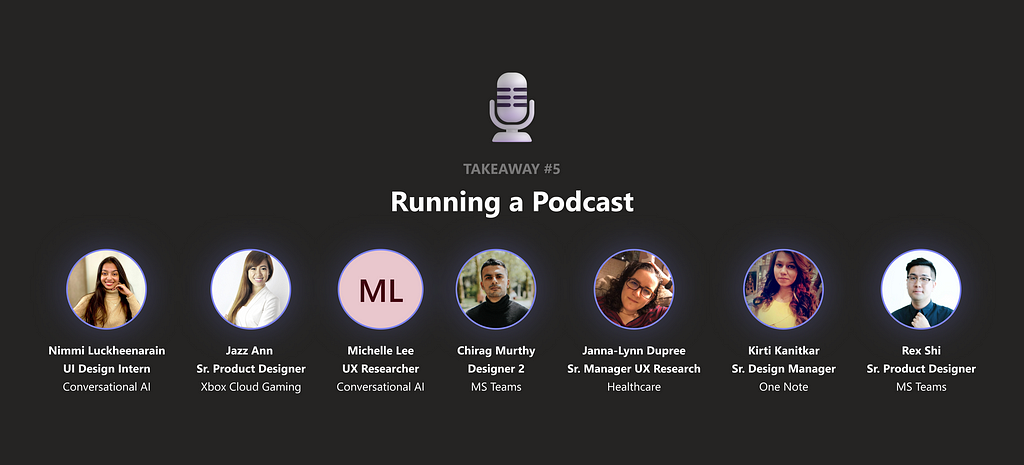
From September to December 2022, I had an opportunity to do an internship at Microsoft as a Visual User Experience Designer with the Nuance Customer Engagement R&D team. In this article, I would like to share key takeaways that I have learned from being a part of a fantastic team.
My Role During the Internship
I was entrusted with three projects while reporting to managers for directions and significant decision-making. My role involved research to creating prototypes and product strategies. My responsibilities included the following:
- Improving the experience and interaction of an AI Conversation Insights platform.
- Designing a child and parent website from scratch.
- Building working prototypes as a proof-of-concept for my projects.
- Conduct focus groups and plan user testing to evaluate those designs.
- Learning how accessibility could be prioritized when designing for the first release.

The tools and skills that I have exercised during the internship included:
- Research: Stakeholder interviews, testing plan
- Design: Brainstorming, organizing, and prioritizing design ideas, user flow
- Prototyping: Wireframe, Design Explorations, Design System, Illustrations
- Evaluation: Focus Groups and Plan usability tests.

Being exposed to large-scale enterprises and how far into the future the company plans directly influenced my work process. I was fond of product strategy, which helped me to seek context of the current stage and propose potential next steps, ideas, and research rather than settle for the given task. For instance, the task of redesigning a child website project involved setting a visual style and intuitive information architecture. As easy as it may sound, after collaborating with an interdisciplinary team, I understood that’s not the case. Having a north star approach enabled me to strategize and design not just the child website but also account for how the parent website would fit with the company’s marketing strategies. I explored beyond the given task, proposed a strategy through prototypes for the child website, and shared a vision to stakeholders on how the current website should evolve.
Every task must have a purpose and more importantly an understanding of how it will evolve.
It’s my way of doing due diligence for my work, informing what I expect this product to be, building a proper foundation, and ensuring that the team is aligned and the product is heading in the right direction.

Something that grew with me over time, from being in an enterprise production environment, I became confident in rationalizing my methods, perspectives, and process. I need to be open to unlearning and learning the work processes of our team, how to conduct research, or how designs are validated.
The only thing stopping me from doing a better job is myself.
Designers can struggle with following specific steps the team follows for a project because they have many questions that need answers. In the case of my website project, nothing stopped me from exploring internal Microsoft research and sharing it with my team. I contacted the researcher during office hours to clarify my questions. That helped identify various users, and construct mind maps and information architecture, which enabled to set core principles for the website. We are not spoon-fed by managers on where to seek answers, but we do better by self-reflecting on our knowledge and staying curious.

Learning the design process and following them might be a good strategy, but it can hinder one from doing better work. Identifying limitations and sharing that with my manager helped me understand that sometimes it’s better to take the right approach and ask for forgiveness with valid justification. However, there is a clear line that shouldn’t be crossed, and this highly depends on various constraints such as technical feasibility, time, effort, and prioritization.
Don’t ask for permission but for forgiveness. I am an expert and need to voice my opinion.
My last takeaway, “What’s Stopping me?” goes hand in hand. When improving the overall experience and interaction of an AI Conversation Insights platform, I hit an obstacle where I was unsure what users found useful and needed to conduct usability research. So, I contacted a researcher from another product to collaborate and gained approval to validate my ideas and put together a test plan.

In my master’s, it is often said that the UX team is responsible for creating designs that meet the needs and expectations of target groups. However, I have learned through this internship that UX Design is more complex than this simple explanation.
The stakeholder’s expertise and involvement in developing an idea are vital for product success, especially as part of the R&D Team. Along with research and mock-ups to validate the idea, the right people could help identify issues and share perspectives, which is part of the presentation process.
Don’t constrain yourself with social standards.
It is important to encourage stakeholder’s expertise and involvement, so I can also let them drive the initiative along with me. First, I identified the person whose expertise I required, then realized that every conversation is two-directional, and others have something credible. My first step is to facilitate the discussions to identify stakeholder’s needs, wants, and expectations to help you.
A fantastic way to start a conversation with someone is by asking them what they think of your idea and why they are interested in it.
You may have similar goals, or they differ from yours. If so, this could be an opportunity to learn from each other and build a stronger team relationship. It’s no surprise ideas get turned down; In these cases, it is better to learn why and be humble when it fails. After my research for enhancing AI Conversation Insights platform, I proposed an idea. However, it didn’t get greenlit after speaking with project managers, designers, and researchers. But from being humble, I understood why and built a strong relationship with the researcher. Later, this interaction with the researcher assisted in planning for usability testing; they were more motivated, involved in the project, and highlighted various existing issues.

Though 30-second content is as popular as ever, I am a fan of long-form content like audiobooks or podcasts. It’s contextual and has a better reach and impact, which I could carry out in my life and work. Following the same, I always wanted to have my own podcast. Design podcasts out now scripted, short-timed, and prescriptive, and often I don’t get inside the head of the guest since they are careful of what they say.
Access to one of the world’s largest libraries, people’s brains. Fortunately, Microsoft has thousands of people and products.
As from my previous blog, I follow what Bruce Lee preached “Research your own experience, absorb what is useful, reject what is useless and add what is specifically your own. Podcasting is my way of seeking knowledge or trying to have a conversation about topics public podcasts fail to cover due to NDAs. I spoke candidly with people for 70/90+ minutes whose work, research, or products interested me at the time. This directly reflected and inspired my role and tasks during the internship.
Nimmi Luckheenarain, Conversational AI: Design intern: We discussed AI conversations and learned Interactive Voice Response (IVR) principles and conversational interaction.
Jazz Ann, Xbox Cloud Gaming: Collaborated during Microsoft Internal Hackathon, where I learned about secondary research, building confidence in sharing research work, future product strategy, Designing using data, and prioritization of work.
Michelle Lee, Conversational AI: Learned about the team research process, methods used internally for research, Usability Testing, and Sci-Fi podcast.
Chirag Murthy, MS Teams: Inspired and discussed his work in Inclusive Design, Emoji reactions, building strong interdisciplinary team relationships, and explorations and caring in design work.
Janna-Lynn (Weber) Dupree, Healthcare: Discussed UX and Research for Healthcare, dealing with imposter syndrome, wicked problems, and first-based principles thinking.
Kirti Kanitkar, One Note: A fanboy moment as I learned about her research work during my summer inclusive research and design work. We discussed Rational Thinking, North Star Approach over the Blue-Sky approach in design, and open-minded learning as she did similar podcast work but reached out to professionals in various fields.
Rex Shi, MS Teams: Known for a year with whom I had been in conversations, guiding and sharing my experiences, even inspiring me to become a mentor for incoming students at my masters.
I found people to be more open if I have a small conversation before where we share each other’s work which helps me prepare for the discussions. I would continue if I were to take a full-time position within Microsoft. If this idea gets more significant, I will share what I learned from each person and another blog compiling everything.
Special Thanks!
Lastly, I would like to take this opportunity to thank Daniel, Izzy, Massimo, Caleb, and Olga for allowing me to be authentic with my personality and quickly making me forget I was “just” an intern.

Five Takeaways from my Microsoft Design Internship was originally published in UX Planet on Medium, where people are continuing the conversation by highlighting and responding to this story.